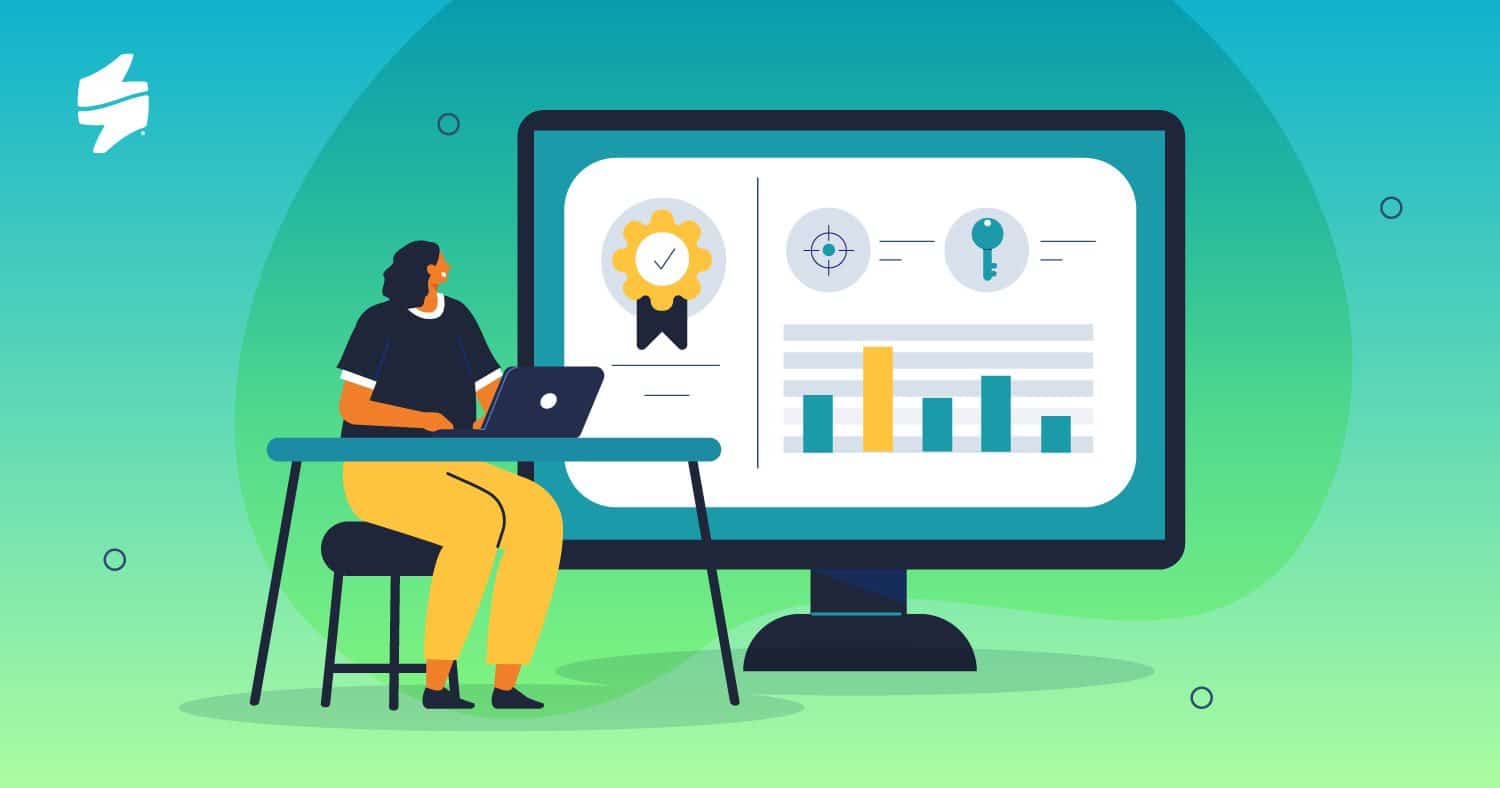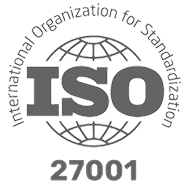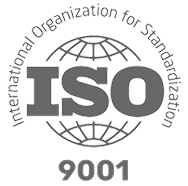Employee motivation is a critical aspect of any successful business. It refers to the drive, enthusiasm, and commitment that individuals bring to their work. Motivated employees are more likely to be engaged, productive, and satisfied with their jobs.
Let’s talk motivation in the workplace. How can it be managed to achieve your team’s full potential? In this comprehensive guide, we will explore employee motivation tips, including the definition of motivation, key factors, benefits, techniques, measurement, and the role of employee engagement software in motivating employees. Read on to find out how to enhance your employee motivation and drive better business results!
What Is Worker Motivation?
Worker motivation encompasses the internal and external factors that stimulate individuals to take action, persist in their efforts, and achieve organisational goals. It is the force that energises employees, leading to increased performance, productivity, and job satisfaction. Motivated employees exhibit a strong desire to succeed, take the initiative, and go beyond their basic job responsibilities.

Give Your Employees the Recognition and Motivation They Deserve
Does your team need a little extra motivation? Our platform provides powerful insights into your team’s performance and various recognition tools that help ensure everyone feels appreciated.
Extrinsic Versus Intrinsic Employee Motivation
When it comes to staff motivation, two primary factors come into play: extrinsic and intrinsic motivation. Understanding the distinction between these two can provide valuable insights into what drives individuals to excel in their roles and contribute to the success of your organisation.
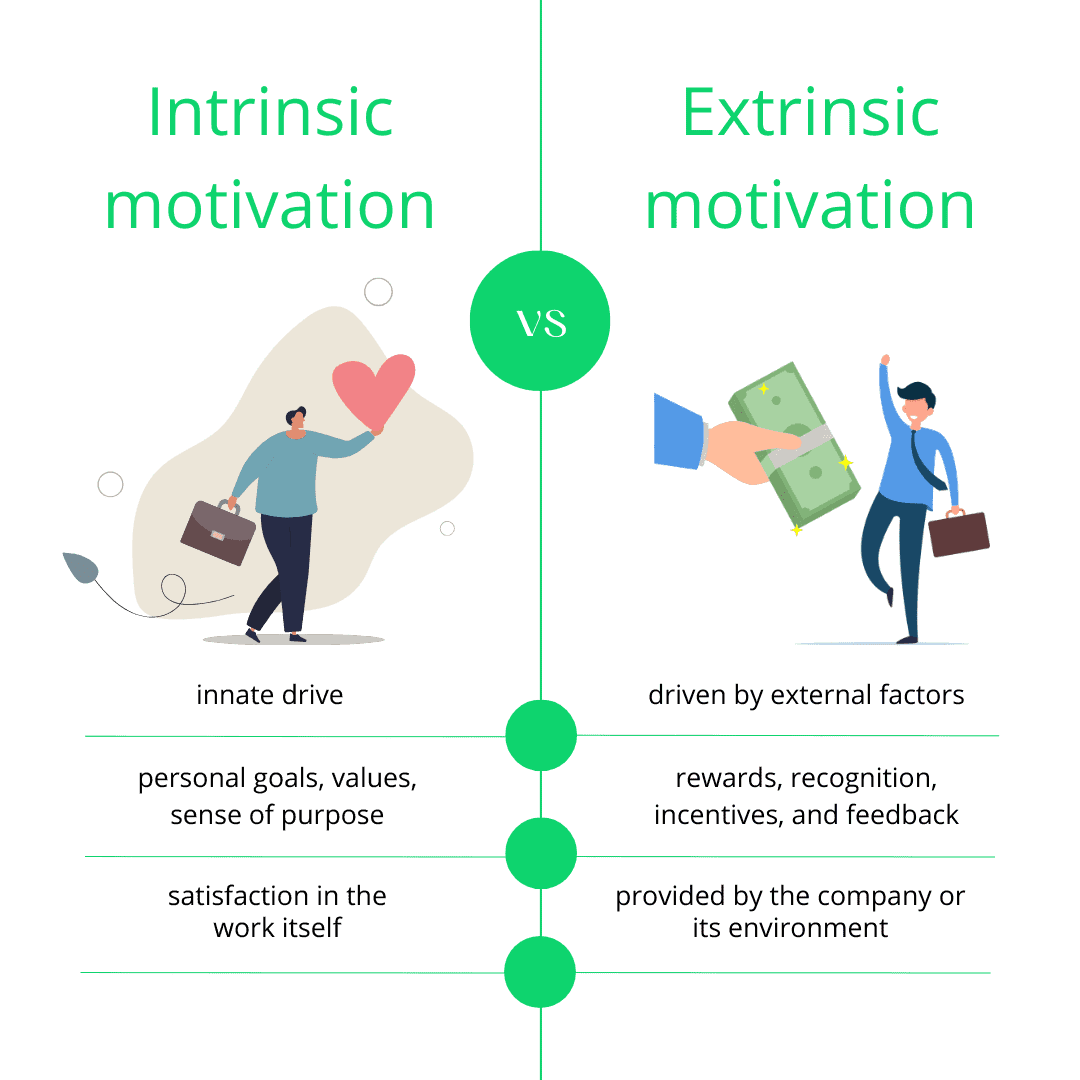
Definition of Intrinsic Motivation
Intrinsic motivation refers to the innate drive and personal desires that individuals possess. It stems from within and is fueled by factors such as personal goals, values, and a sense of purpose. Employees who are intrinsically motivated are self-driven, passionate about their work, and strive for personal growth and achievement. They find satisfaction in the work itself and derive a sense of fulfilment from meeting their own standards of excellence.
Definition of Extrinsic Motivation
On the other hand, extrinsic motivation is influenced by external factors that are typically provided by the organisation or its environment. It includes rewards, employee recognition, incentives, and feedback from supervisors and peers. External motivators can take the form of financial bonuses, promotions, public praise, or even simple gestures like a thank-you note. These external factors serve as extrinsic rewards that encourage employees to perform well and meet organisational expectations.
Which Is Better? Extrinsic or Intrinsic Motivation?
While both intrinsic and extrinsic motivation play crucial roles in driving employee performance, research suggests that intrinsic motivation tends to have a more sustainable and long-lasting impact. When employees are intrinsically motivated, they are more likely to demonstrate higher levels of engagement, creativity, and commitment to their work. They are driven by a genuine passion for what they do, which can lead to continuous improvement, innovation, and a sense of ownership in their roles.
Extrinsic motivation of employees, although effective in the short term, may not always foster long-term commitment and satisfaction. Employees who are solely reliant on external rewards may become disengaged once the rewards diminish or if they perceive a lack of fairness in the distribution of rewards. Therefore, you always need to strike a balance between intrinsic and extrinsic motivators to create a sustainable and motivating work environment.
Why Is Motivation Important in the Workplace? Top 10 Benefits of Motivated Employees
Motivation in the workplace is crucial for a number of reasons. Well-established employee motivation management offers numerous benefits to both employees and organisations. Let’s explore the ten key advantages:
1. Increased productivity and employee engagement
Motivated employees are more engaged, committed, and passionate about their work. Therefore, they are more likely to put in extra effort, leading to higher productivity levels. They have a better will to work, are committed to achieving their goals, and consistently strive for excellence.
2. Enhanced job satisfaction
Motivated employees tend to be more satisfied with their work. When employees feel valued, recognised, and engaged, employee satisfaction rises.
3. Improved employee retention
Organisations that prioritise motivation often experience lower employee turnover rates. Employees are considered as internal customers, and just like customer retention, it is crucial to invest effort in fostering their loyalty to your company. Motivated employees are more likely to remain loyal to their employers, reducing recruitment and training costs.
4. Positive work environment
Motivated employees contribute to a positive work environment. Their enthusiasm and energy are contagious, fostering collaboration, creativity, and teamwork.
5. Higher quality of work
Motivated employees are more likely to produce high-quality work, contributing to organisational success.
6. Enhanced innovation and creativity
Motivated employees are more inclined to think creatively and contribute innovative ideas.
7. Stronger teamwork and collaboration
Motivated employees foster a culture of teamwork and collaboration, leading to improved outcomes.
8. Increased customer satisfaction
Motivated employees provide better customer service, resulting in higher customer satisfaction levels. You know what they say in the realm of CX – happy employees create happy customers!
9. Improved organisational reputation
Motivated employees contribute to a positive organisational reputation, attracting top talent and customers.
10. Higher profitability
Motivated employees drive organisational success, leading to increased profitability and growth.
What Are the Top 4 Motivational Factors For Most Employees?
What is the best motivator for employees? While the top employee motivators can vary, several common themes emerge in the present workplace, including recognition, growth, meaning, and balance. According to numerous studies, the top four motivational factors for most employees are:
1. Recognition and appreciation
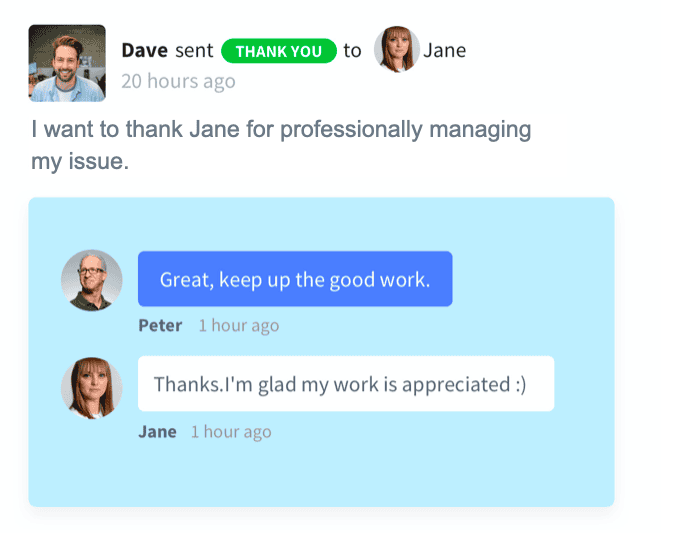
Employees crave recognition for their contributions and achievements. Acknowledging their hard work and efforts can significantly boost motivation levels.
2. Opportunities for growth and development
Employees seek opportunities to enhance their skills, knowledge, and expertise. Providing avenues for continuous learning and career advancement is a potent motivator.
3. Meaningful work
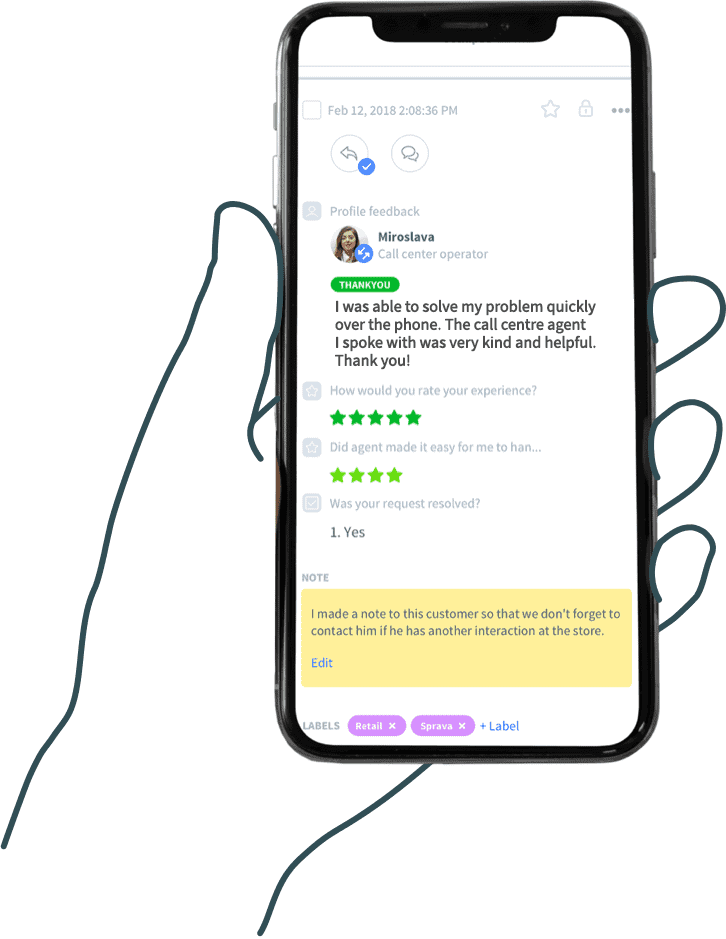
Employees are motivated when they perceive their work as meaningful and aligned with their values. When they understand the impact of their contributions, their motivation soars. This can be achieved by regularly sharing positive customer feedback with employees. When they witness the impact of their efforts, it motivates them to consistently strive for excellence.
4. Work-life balance
Striking a balance between work and personal life is crucial for employee motivation. Organisations that support work-life balance initiatives create a positive motivational environment.
While these factors are a must-have, the best motivation for employees often varies from person to person. Effective managers understand the individual needs and preferences of their employees and tailor motivational strategies accordingly. What are some other commonly used motivators for employees in 2024? Check them out below!
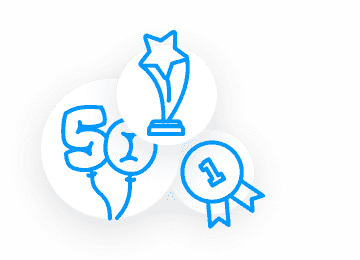
Unlock Your Team's Full Potential with Staffino's EX Products
Our EX platform can help you attract and retain top talent, track employee performance, and improve engagement and productivity – so your team can reach their highest potential.
How to Motivate Employees in 2025: Top 20 Employee Motivation Techniques
How to motivate staff and create a culture of positivity and motivation in 2025? Firstly, embrace the fact that motivating staff nowadays requires a multifaceted approach. We recommend testing out several techniques and measuring what works best for your team. Here are twenty techniques to inspire and engage employees:
1. Provide regular feedback and recognition
Regularly communicate with employees about their performance, providing constructive feedback and acknowledging their achievements. This can be done through one-on-one meetings, performance evaluations, or team meetings.
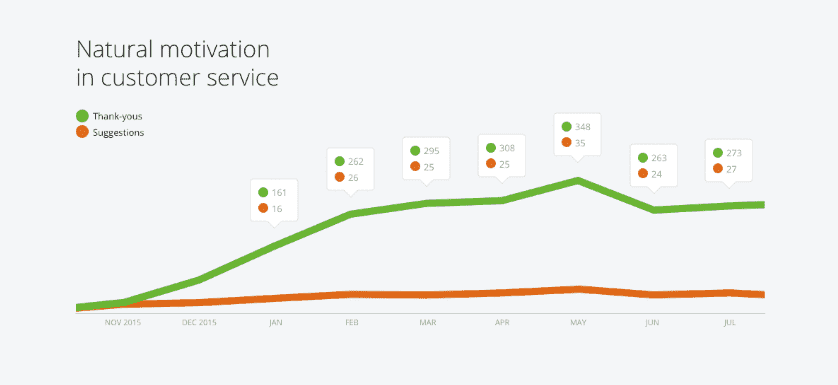
In addition to these, implementing a tool like the Staffino employee experience management platform can help provide daily positive recognition to employees through its recognition tools, such as automatically sharing customer thank-yous or appreciating employees’ achievements through the Internal Discussion channel.
2. Set clear and challenging goals
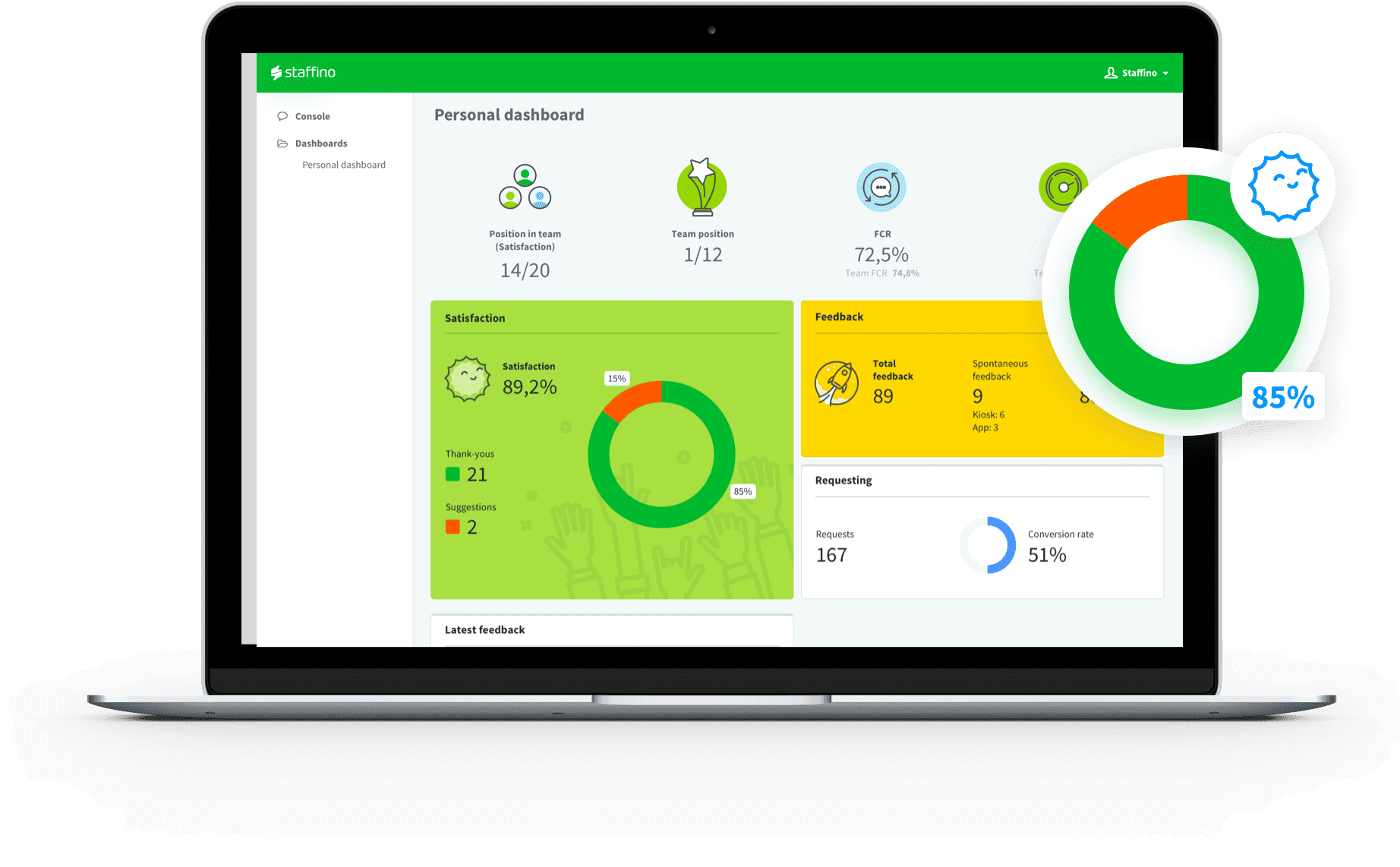
Clearly define expectations and set challenging goals for employees that align with your organisation’s objectives. Ensure employees understand how their individual goals contribute to the overall success of the company.
3. Offer opportunities for skill development and training
Provide employees with opportunities to enhance their skills and knowledge through training programs, workshops, or professional development courses. Encourage employees to take ownership of their learning and provide support for their growth.
4. Foster a positive work environment
Create a positive and supportive work environment by promoting teamwork, collaboration, and respect. Encourage open communication, celebrate achievements, and address any conflicts or issues promptly.
5. Encourage employee autonomy and decision-making
Empower employees to make decisions and take ownership of their work. Provide guidance and support when needed, but allow them to have autonomy and trust in their abilities.
6. Promote work-life balance initiatives
Offer flexible work arrangements, such as flexible hours or remote work options, to help employees maintain a healthy work-life balance. Encourage employees to prioritise self-care and take time off when needed.
7. Create a culture of open communication and transparency
Foster a culture of open and honest communication where employees feel comfortable sharing their ideas, concerns, and feedback. Be transparent about organisational decisions and share information regularly.
8. Implement employee reward and recognition programs
Establish programs to recognise and reward employee achievements and contributions. This can include monetary incentives, public recognition, or non-monetary rewards such as additional time off or professional development opportunities.
9. Support career advancement opportunities
Provide employees with opportunities for growth and advancement within the organisation. Offer training, mentorship programs, or internal job postings to help employees develop their careers.
10. Celebrate individual and team achievements
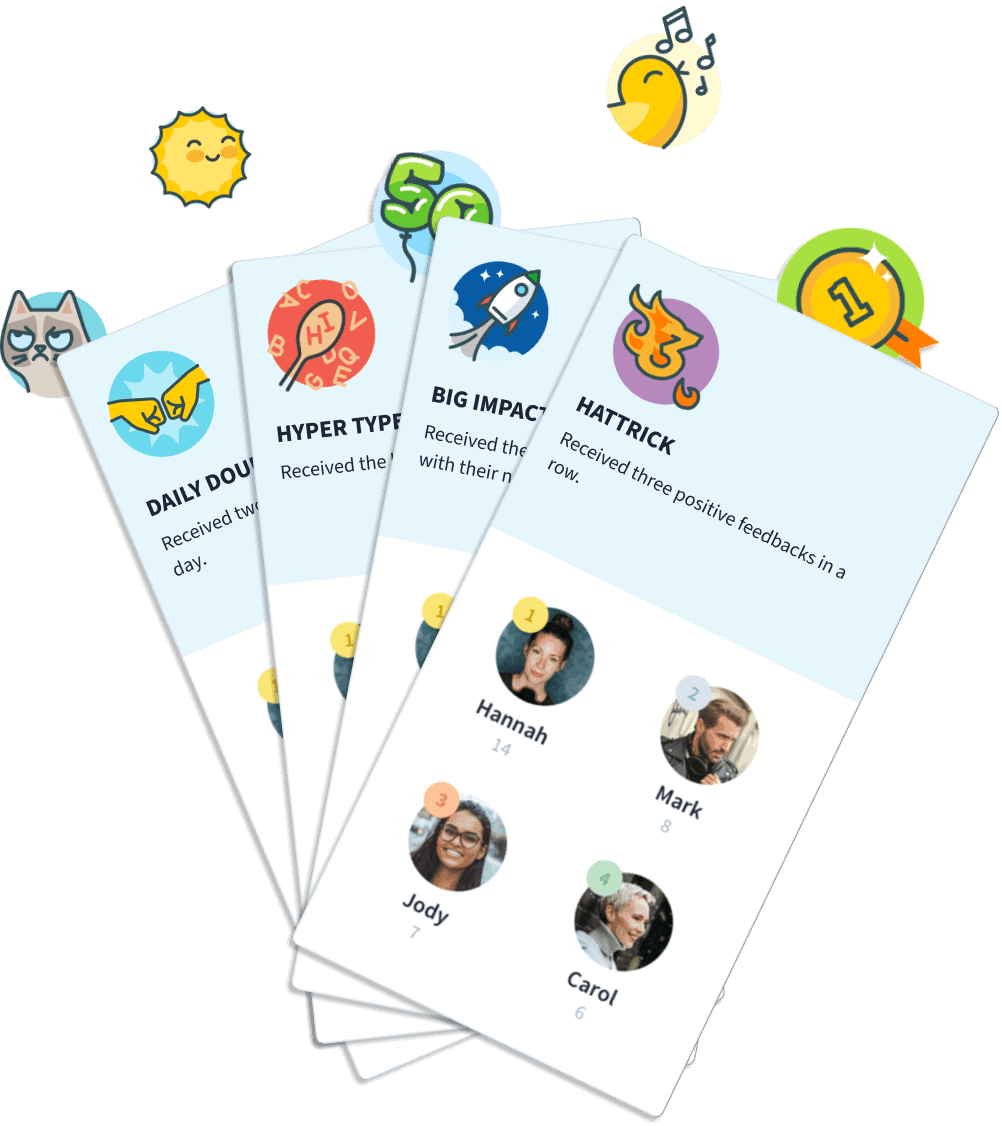
To boost morale and motivation, recognise and celebrate individual and team achievements. This can be done through virtual awards, team celebrations, or public acknowledgements.
11. Encourage employee involvement in decision-making processes
Involve employees in decision-making processes that affect their work. Seek their input, listen to their ideas, and consider their perspectives when making decisions.
12. Foster a sense of purpose and meaning in their work
Help employees understand how their work contributes to the larger purpose and mission of your company. Communicate the impact of their work and provide opportunities for them to see the positive outcomes.
13. Provide opportunities for employee input and feedback
Regularly seek input and feedback from employees on various aspects of their work, such as processes, policies, or projects. Actively listen to their suggestions and implement changes when appropriate.
14. Offer competitive compensation and benefits packages
Ensure employees are fairly compensated for their work and offer competitive benefits packages. Regularly review and adjust compensation to align with industry standards and recognise employee contributions.
15. Create a supportive and inclusive workplace culture
Foster a culture that values diversity and inclusivity, where all employees feel respected and included. Implement policies and practices that promote diversity and address any biases or discrimination.
16. Provide opportunities for cross-functional collaboration
Encourage employees to collaborate with colleagues from different departments or teams. Foster a culture of knowledge-sharing and teamwork to enhance creativity and problem-solving.
17. Offer flexible work arrangements
Provide flexibility in work schedules or locations to accommodate employees’ personal needs and preferences. This can include options such as remote work, flexible hours, or compressed workweeks.
18. Empower employees to take ownership of their work
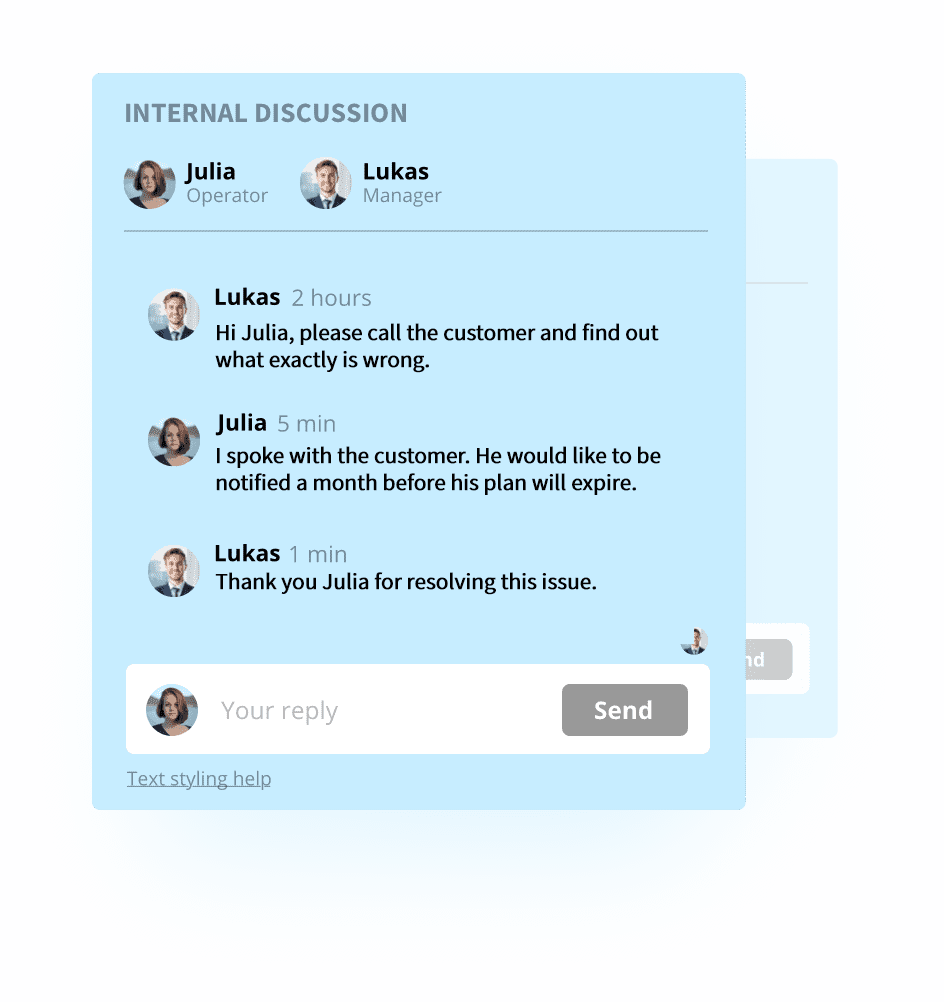
19. Foster a culture of continuous learning and improvement
Encourage employees to embrace a growth mindset and continuously seek opportunities for learning and improvement. Provide resources, such as training programs or access to educational materials, to support their development.
20. Lead by example and demonstrate appreciation for employee contributions
As a leader, set a positive example by demonstrating appreciation for employee contributions. Show gratitude, provide regular feedback, and recognise their efforts to motivate and inspire them.
Implementing these techniques can help you create a motivational environment that drives employee engagement and performance.
How to Measure Employee Motivation?
Employee motivation can be measured through surveys, feedback tools, engagement scores, performance data, and indicators like absenteeism, turnover, and productivity.
Measuring employees motivation is essential to gauge the effectiveness of your motivational strategies. While it is challenging to quantify motivation directly, several indirect indicators can provide valuable insights. Here are some common methods to measure employee motivation:
1. Employee surveys
Conducting regular employee experience surveys can help gather feedback on employee motivation levels, job satisfaction, and engagement.
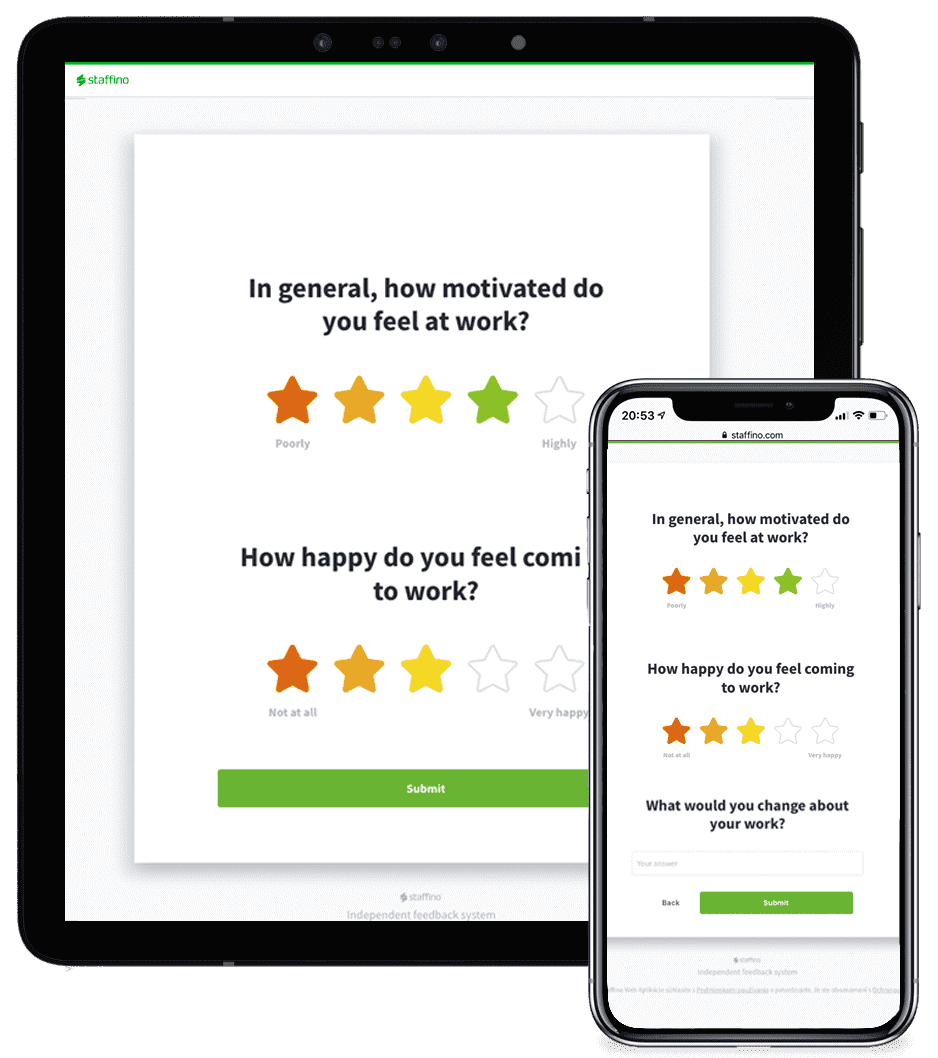
2. Performance metrics
Monitoring performance metrics such as productivity, quality, and absenteeism can provide insights into employee motivation.
3. Employee retention rates
High employee retention rates often indicate a motivated workforce, while high turnover rates may suggest motivational issues.
4. Employee feedback and suggestions
Encouraging open communication and actively seeking employee feedback can provide valuable insights into motivation levels.
5. Observations and interviews
Managers and supervisors can observe employee behaviour and conduct interviews to assess motivation levels.
By using a combination of these methods, organisations can gain a holistic understanding of employee motivation and make informed decisions to enhance it. Continue reading to see how you can streamline the process of measuring employee motivations at work using online employee experience software.
Employee Motivation in Practice: This is How Successful Brands Motivate Their Employees
Let’s now explore how well-known brands from the retail, finance, and telecommunications industries have successfully motivated their employees through the implementation of Staffino. By leveraging our employee motivation platform, our clients have been able to unlock the full potential of their workforce and drive significant improvements in employee engagement, morale, and productivity.
1. Volkswagen Financial Services: Motivating employees through facilitating employee input and ownership
Volkswagen Financial Services is a well-known financial company that specialises in financing passenger and commercial vehicles. One way they motivate their employees is by encouraging them to contribute and take ownership of their work.
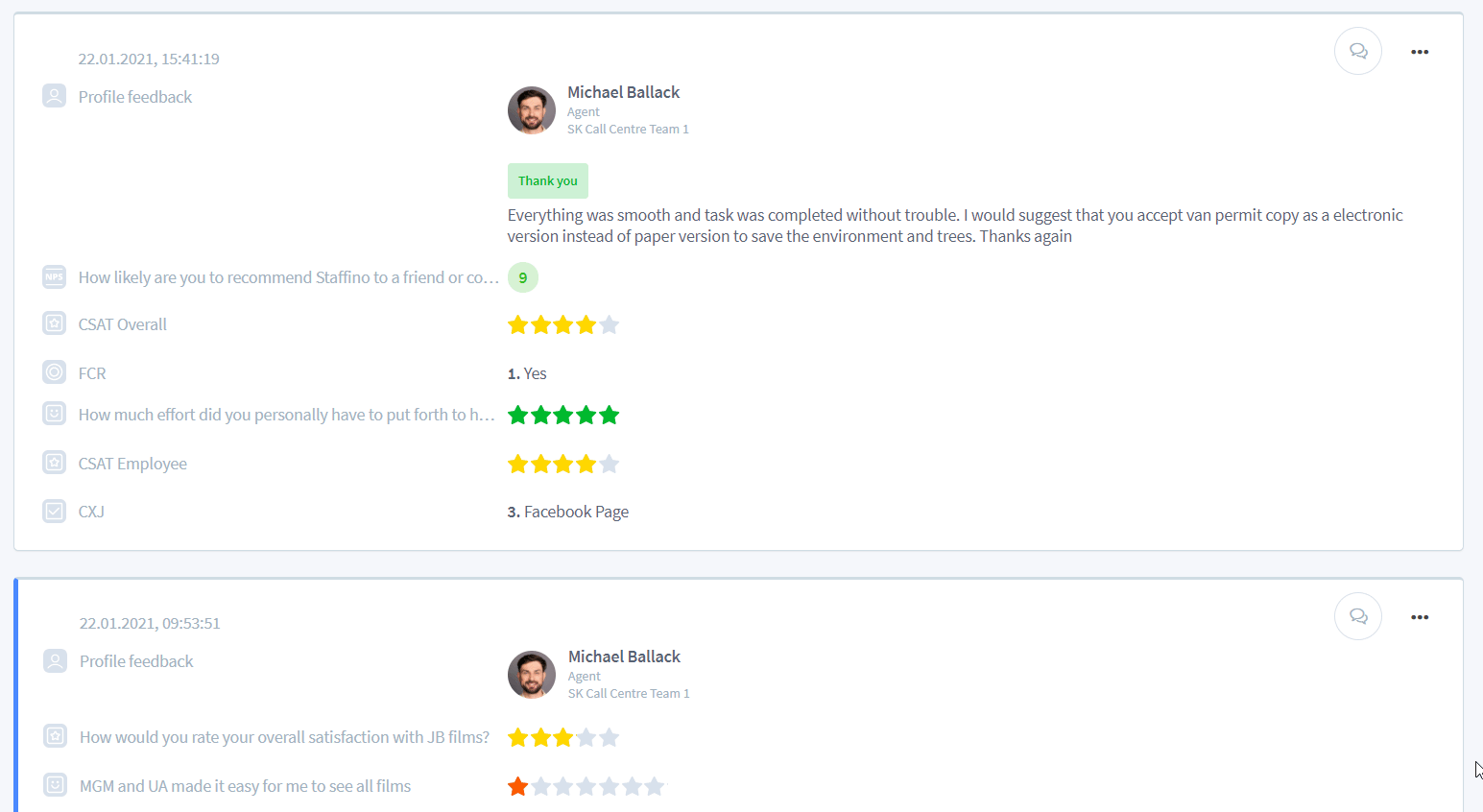
In 2017, the Czech branch of VWFS introduced Staffino, a platform that allows front-line employees to actively engage in problem-solving and provide feedback. This initiative aimed to increase employee engagement by empowering them to address negative customer feedback internally and offer suggestions for improvement.
“Today, it is already standard for us that in the case of receiving a comment from our customer, the employee will automatically send a message about this particular case to the manager in the application. This way, we do not only get the employee’s view of the situation but possibly also an idea for improvement.”
Dan Toma
Operations Specialist Europe, VWFS
By giving employees a sense of ownership and empowerment, the company saw an increase in employee engagement and innovative ideas for enhancing their services. This, in turn, led to higher customer satisfaction levels. Employees could directly see the impact of their contributions, which motivated them to actively participate in problem-solving and decision-making processes. Read more about this success story here!
2. Orange: Motivating employees through daily positive recognition
Generally, many call centre agents and frontline employees choose to quit their jobs due to various reasons such as a lack of motivation, inadequate recognition, and the presence of psychological issues and stress. The high rate of voluntary attrition is a significant challenge faced by call centres, resulting in substantial financial losses for companies each year.
To address this issue, the Slovak branch of Orange, a multinational telecommunications company, has implemented Staffino’s online tools for employee motivation and recognition at their call centre.
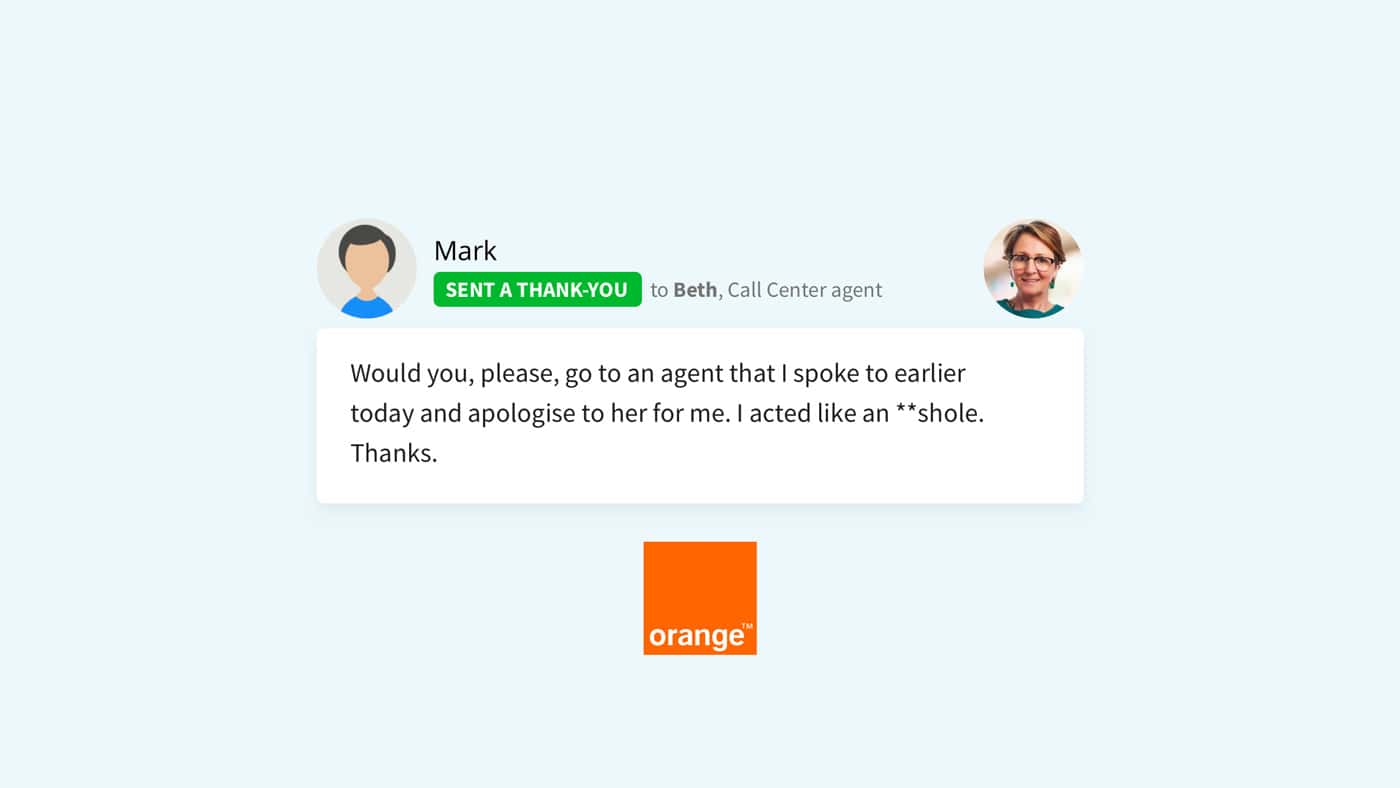
Firstly, Staffino effectively boosted employee morale and demonstrated the value of their work by automatically sharing positive customer feedback and expressions of gratitude with call centre agents. Secondly, the inclusion of an Internal Discussion feature allowed managers to provide daily recognition to their team members in response to positive customer feedback.
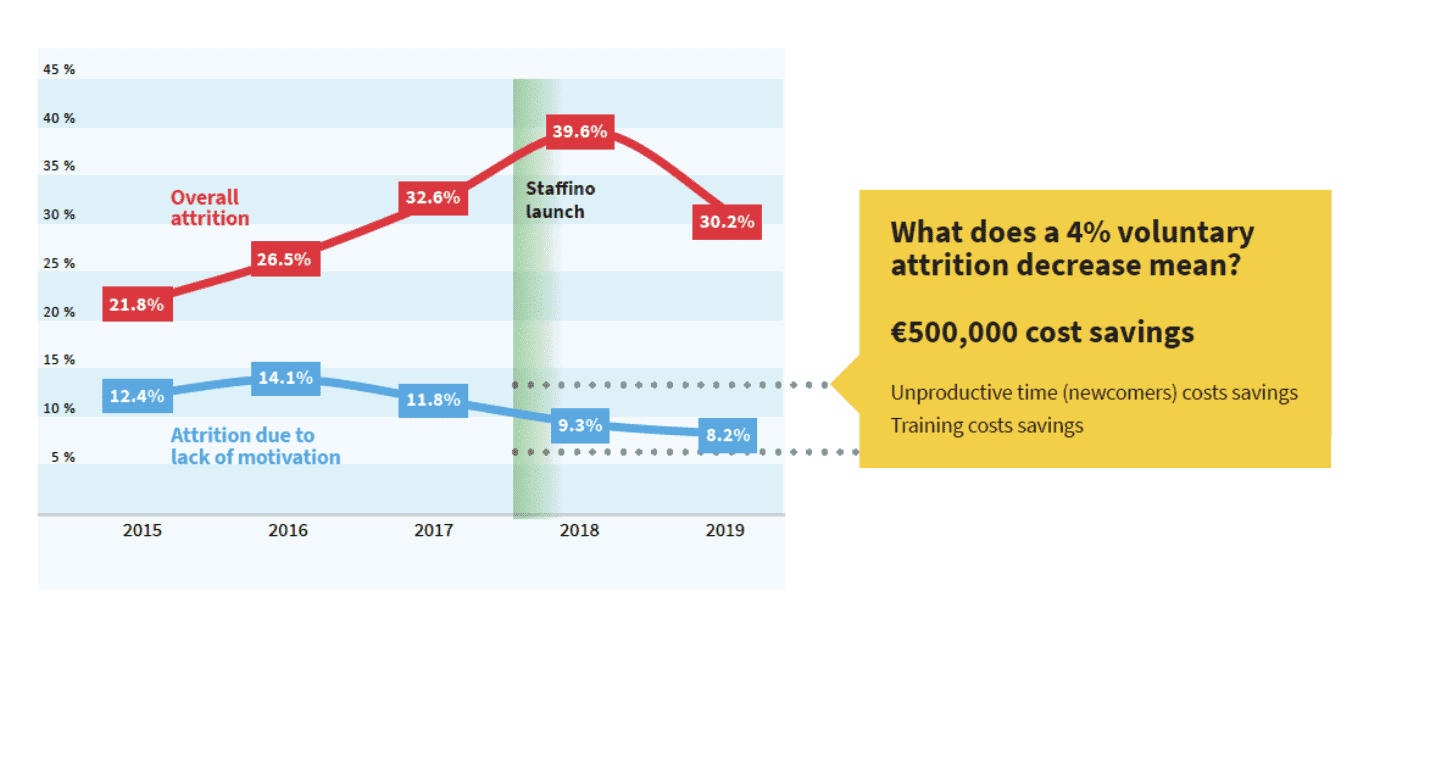
This simple act of acknowledging their efforts and accomplishments had a profound effect on employee motivation and overall morale. The tangible result of this was a remarkable cost-saving of €500,000 in attrition expenses for the call centre, as motivated agents were more inclined to remain with the company and consistently perform at their best.
3. MALL.CZ: Motivating employees through gamification in the workplace
Finally, here’s a great gamification example that showcases the power of healthy competition and rewards in boosting employee motivation.

MALL.CZ, an online retailer, implemented a gamification strategy by utilising Staffino’s employee gamification module. They established a system where call centre agents could earn points and badges based on their CX performance and accomplishments. This gamified approach not only made work more enjoyable and engaging but also encouraged healthy competition among employees.
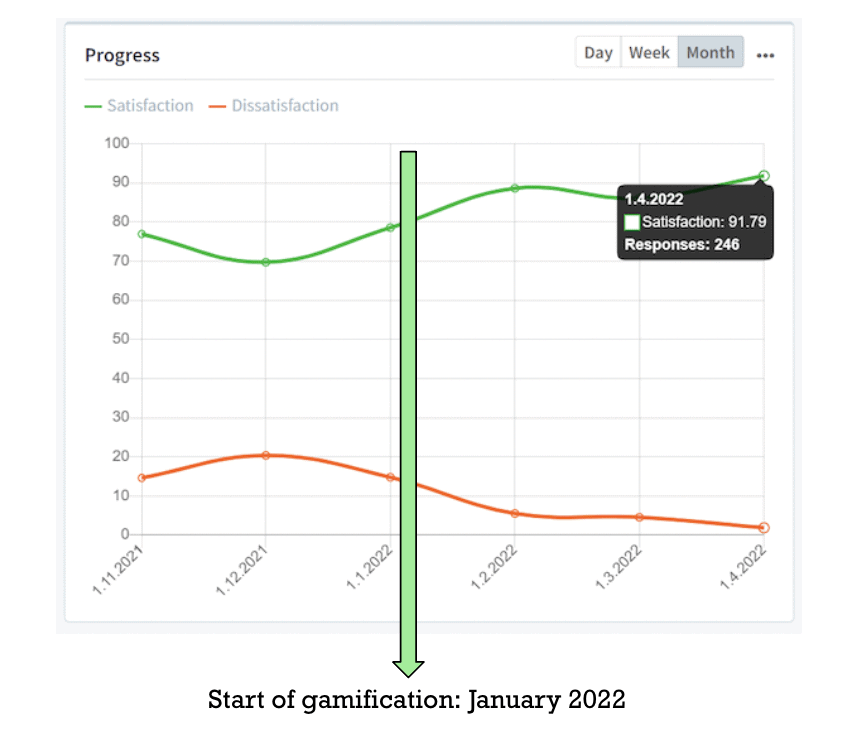
Consequently, MALL.CZ experienced a significant rise in employee motivation and productivity, particularly in their call centre teams, where managers effectively communicated the concept of gamification. The employees were motivated to work better, resulting in a notable 2-10% increase in customer satisfaction in the teams where gamification was successfully implemented. For more information, you can refer to the gamification success story available on our website.

Boost Employee Productivity through Gamification
Motivate and reward your employees with Staffino's Employee Gamification. Our platform provides custom challenges, rewards, and leaderboards to help you increase productivity and engagement.
How Do Employee Motivation Management Platforms Work?
Employee motivation management platforms work by collecting employee feedback, tracking engagement and performance, and offering tools for recognition, rewards, and communication. They help managers identify motivation levels and take action to improve them.
Nowadays, employee motivation management platforms, such as Staffino, play a crucial role in driving and sustaining employee motivation. Our user-friendly online platform offers a range of features that can help you enhance your team’s motivation. It enables organisations worldwide to:
1. Recognise and appreciate employees
One of the key features of Staffino’s employee motivation tools is the ability to recognise and appreciate employees. The platform provides a dedicated space where managers and colleagues can acknowledge and appreciate the customer service efforts and achievements of their team members. This recognition helps foster a culture of appreciation and motivates employees to continue performing at their best when it comes to serving your customers.
2. Facilitate employee feedback
In addition to recognition, Staffino’s employee experience surveys and the Internal Discussion feature also facilitate employee feedback. Through the platform, employees can provide feedback, suggestions, and ideas, giving them a voice and empowering them to contribute to organisational improvement. This feedback loop helps employees feel valued and engaged, further enhancing their motivation.
3. Measure and track motivation levels
Our platform also includes advanced AI-powered analytics and reporting capabilities. These features allow your company to measure and track employee motivation levels, providing valuable insights into the factors that drive or hinder motivation. With this information, you can identify areas for improvement and implement targeted strategies to enhance employee motivation.
4. Enhance communication and collaboration
Through the Internal Discussion feature, Staffino facilitates open communication between employees and managers. Furthermore, our platform’s gamification tools support team spirit, collaboration and healthy competition, enabling employees to share ideas, best practices, and success stories.
5. Drive employee performance and goal alignment
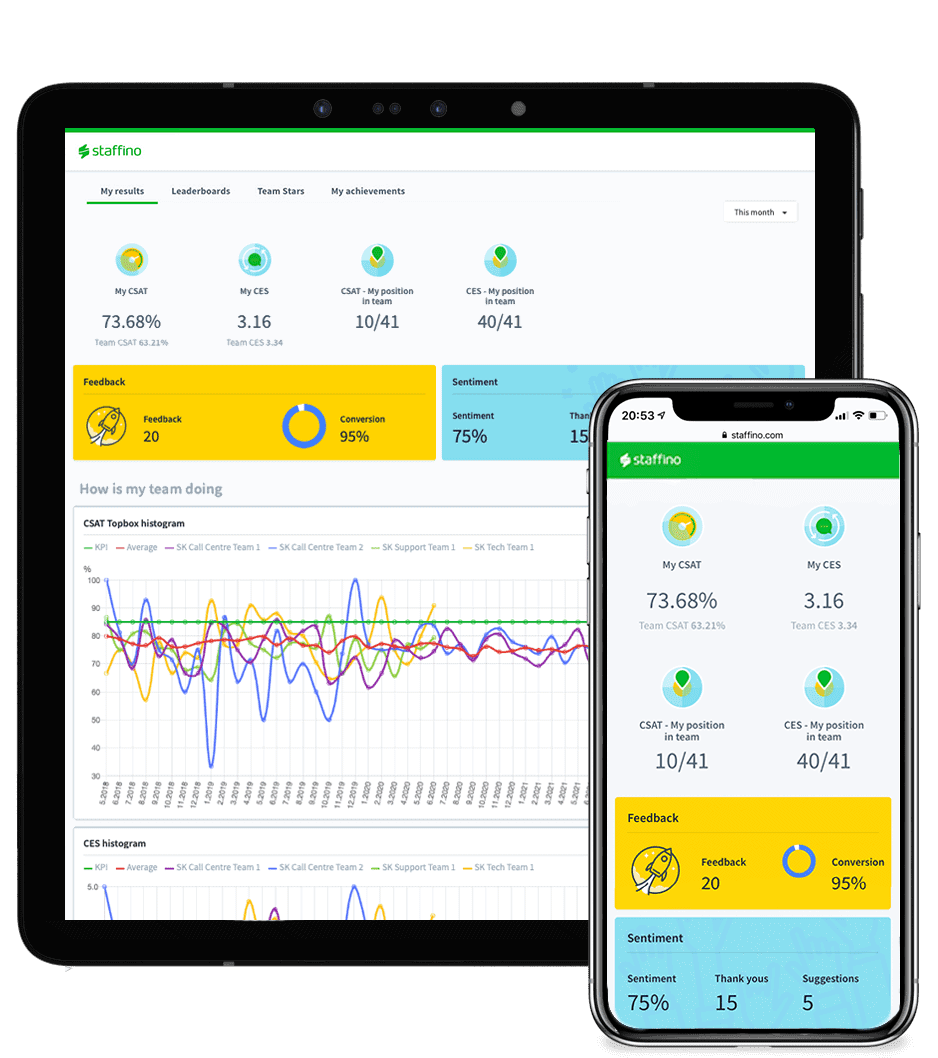
Our customer and employee experience consulting experts can help you align employee goals with organisational objectives, creating a sense of purpose and motivation. These goals, or KPIs, can then be included in your Staffino employee performance dashboard, allowing you to track your employees’ progress in time.
Like the companies mentioned in the examples above, you, too, can create a motivational ecosystem that fosters employee engagement, satisfaction, and productivity by leveraging the features of our AI-driven employee experience management platform. So, are you ready to unlock your team’s full potential?
Boost Employee Motivation with Staffino today!
Employee motivation is a crucial element in driving business success, and prioritising it strategically can revolutionise your organisation, resulting in heightened productivity and job satisfaction. Now that you know how to motivate employees, you can start implementing the aforementioned effective strategies and unleash the potential of your workforce.
Looking for assistance? Staffino, with its exceptional tools for managing employee motivation, offers a comprehensive solution to enhance motivation, foster engagement, and achieve superior business outcomes. Don’t hesitate to reach out and begin motivating your workforce like a pro today!
Schedule a free demo of our online platform to witness how you can utilise it to amplify employee motivation!

Get a First-Hand Experience Today!
Staffino is the perfect tool for creating engaging surveys, tracking performance, responding to customer feedback, and rewarding top employees. Get started today with our FREE demo!
FAQ
Worker motivation is the desire and willingness of an employee to perform their tasks effectively and with enthusiasm.
The top four motivators are recognition, fair pay, career growth opportunities, and meaningful work.
Motivation in the workplace is what drives employees to achieve goals, complete tasks, and contribute to the company’s success.
The best motivator depends on the person, but common top motivators include recognition, personal growth, and being part of a supportive team.
Motivate employees through clear communication, regular feedback, recognition programs, career development, and fair compensation.
Offer flexible work options, recognise good work, set clear goals, provide development opportunities, and build a positive work environment.
Motivation improves performance, increases engagement, reduces turnover, and helps achieve business goals more effectively.
Employee motivation can be measured through surveys, feedback tools, engagement scores, performance data, and indicators like absenteeism, turnover, and productivity. Platforms like Staffino can track motivation using regular feedback and employee sentiment analysis.
Employee motivation management is the process of encouraging and maintaining employee drive through strategies like recognition, goal-setting, feedback, and workplace improvements. It ensures employees stay engaged, productive, and aligned with company goals.
Top employee motivation platforms include Staffino, which offers recognition, feedback, and performance tracking in one place. Other popular tools are Lattice, 15Five, Motivosity, and Bonusly, each providing different features like goal-setting, engagement surveys, and rewards.
